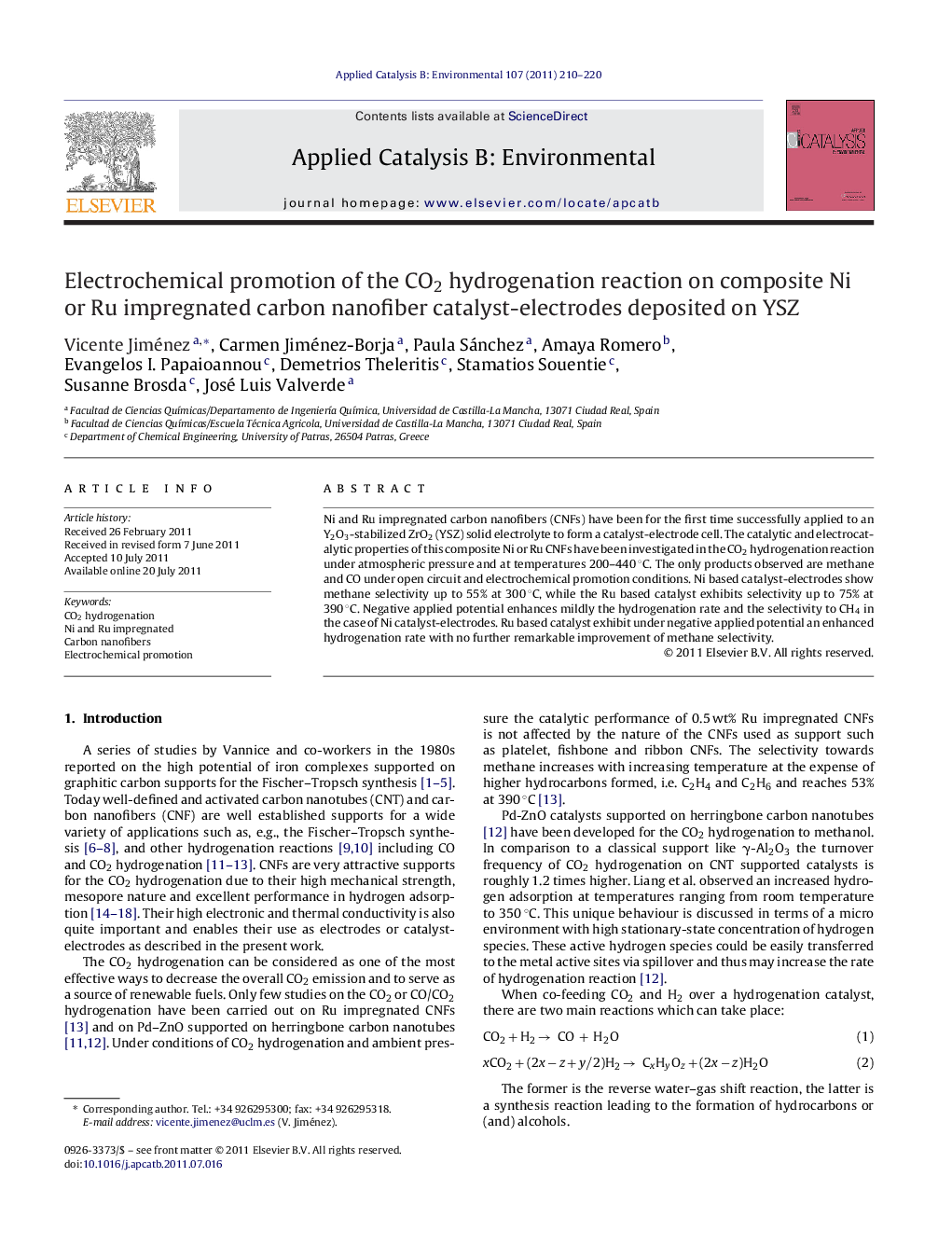| Article ID | Journal | Published Year | Pages | File Type |
|---|---|---|---|---|
| 46740 | Applied Catalysis B: Environmental | 2011 | 11 Pages |
Ni and Ru impregnated carbon nanofibers (CNFs) have been for the first time successfully applied to an Y2O3-stabilized ZrO2 (YSZ) solid electrolyte to form a catalyst-electrode cell. The catalytic and electrocatalytic properties of this composite Ni or Ru CNFs have been investigated in the CO2 hydrogenation reaction under atmospheric pressure and at temperatures 200–440 °C. The only products observed are methane and CO under open circuit and electrochemical promotion conditions. Ni based catalyst-electrodes show methane selectivity up to 55% at 300 °C, while the Ru based catalyst exhibits selectivity up to 75% at 390 °C. Negative applied potential enhances mildly the hydrogenation rate and the selectivity to CH4 in the case of Ni catalyst-electrodes. Ru based catalyst exhibit under negative applied potential an enhanced hydrogenation rate with no further remarkable improvement of methane selectivity.
Graphical abstract(Top) Electrochemical promotion of sample Niimp CNF on Nisput catalyst-electrode deposited on YSZ following application of −1.30 V. Condition: T = 390 °C, PCO2=1 kPaPCO2=1 kPa, PH2=5.6 kPaPH2=5.6 kPa, FT = 100 ml/min. Open circuit potential = 0.005 V. (Bottom) Representative SEM images of the composite catalyst-electrode containing a mixture of 2 wt% YSZ and 98 wt% Ni impregnated CNF deposited on YSZ after exposure to 450 °C in air.Figure optionsDownload full-size imageDownload as PowerPoint slideHighlights► For the first time Ni and Ru impregnated carbon nanofibers (CNF) deposited on an oxygen ion conducting solid electrolyte have been used as catalyst-electrodes for NEMCA (non-Faradaic electrochemical modification of catalytic activity) application. ► Ni and Ru impregnated CNF electrodes are stable in oxidizing and reducing gas compositions up to 450 °C and exhibit satisfactory electronic conductivity to serve as electrodes. ► In the CO2 hydrogenation reaction the selectivity to CH4 was found 20–40% for Ni catalysts and 76% for the Ru catalysts. ► Electrochemical promotion (NEMCA) was obtained for the CO2 hydrogenation on these CNF electrodes.
